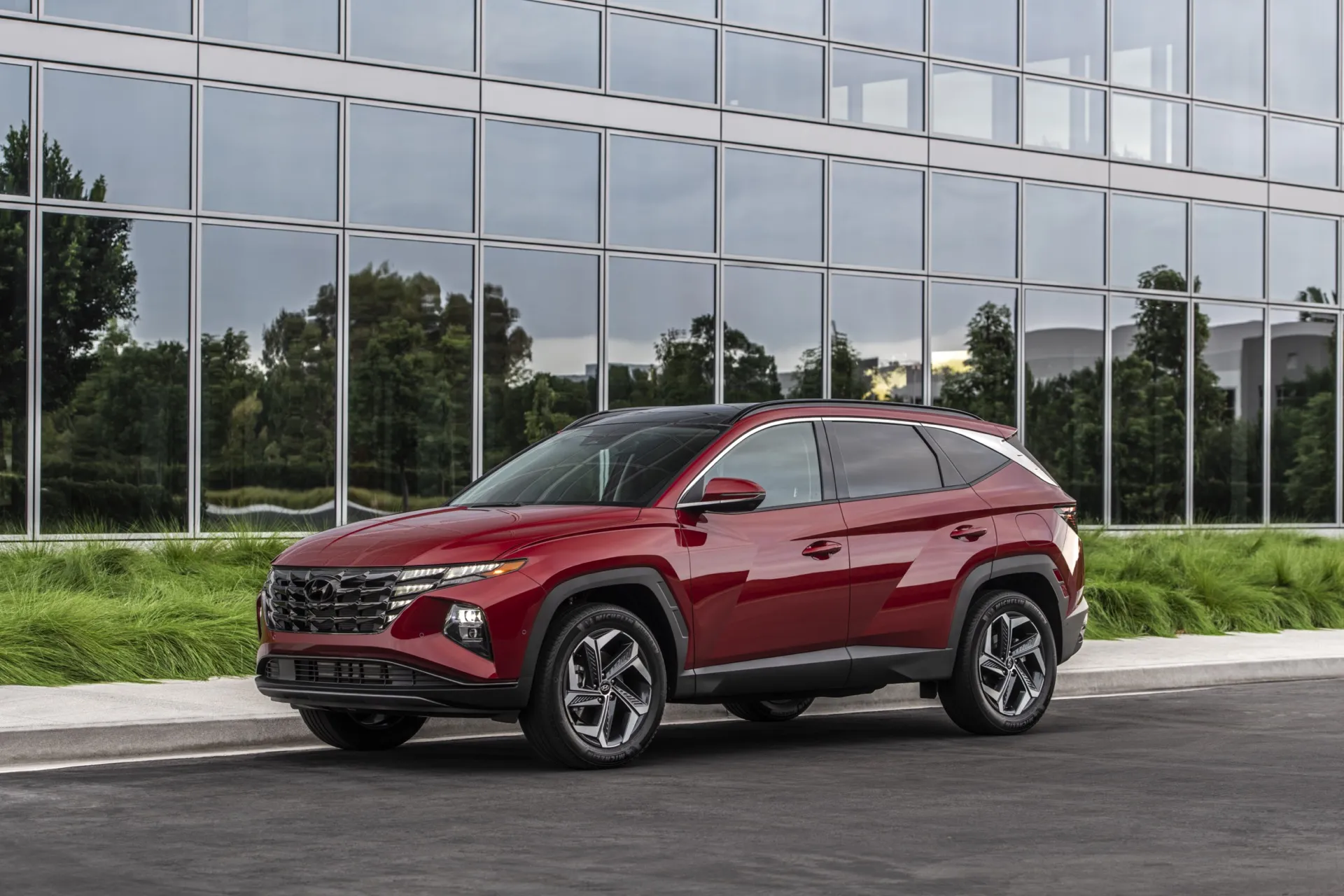Hyundai Kona vs. Tucson: On paper the matchup seems unusual, since both vehicles come from the same South Korean automaker. But with lots of standard equipment, a great warranty, and fuel-efficient and high-performance editions, it’s easy to see the attraction to both the Tucson and the Kona.
While the smaller 2024 Hyundai Kona has a city-friendly size and comes in an Electric edition, the 2024 Hyundai Tucson offers Hybrid and Plug-In Hybrid models to go with its roomy interior and plentiful safety features.
The rivalries are tough for both. The Tucson competes with the Honda CR-V and Nissan Rogue, the Kona more directly with the Kia Sportage and Honda HR-V. Even with each other, it’s a tight race—but if you’re settled on a Hyundai crossover and need to keep it inexpensive and compact, here’s what we would recommend.
2024 Hyundai Kona N Line
Hyundai Kona vs. Tucson prices and features
-
The Kona starts from the mid-$20,000s
-
The Tucson starts in the high $20,000s and can rise to the mid-$40,000s
-
Best picks: Kona SEL, Tucson SEL Hybrid with the Convenience package
What is a Hyundai Kona comparable to? How much is a Kona?
You may be shopping for a Honda HR-V or a Mazda CX-30—but if you’re looking for a small crossover with a low price, the 2024 Kona may hit the mark. It costs as little as $25,435, and that doesn’t leave many blank spots on its dash. It comes with automatic emergency braking, cruise control, alloy wheels, power features, and a 12.3-inch touchscreen with wireless Android Auto and Apple CarPlay. Every Hyundai comes with a 5-year/60,000-mile warranty as well as 3 years or 36,000 miles of free scheduled service, too. We recommend the midrange Kona SEL, which adds keyless start and blind-spot monitors. We’d add the Convenience package for heated front seats and wireless smartphone charging. There’s more power in the turbocharged $31,985 Kona N-Line and $32,985 Kona Limited, which gets synthetic leather upholstery and a power sunroof.
What is a Hyundai Tucson comparable to? How much is a Tucson?
The Tucson carries a higher price, but also more standard equipment as well as a longer list of options. The warranty’s the same as that of the Kona, which makes the Tucson another great value. Base Tucson SE crossovers cost $28,585 and have cloth seats, power features, and an 8.0-inch touchscreen with wireless Apple CarPlay and wired Android Auto. The $33,235 Tucson SEL with the Convenience package adds in wireless smartphone charging, a 10.3-inch digital gauge cluster, a power sunroof, a power tailgate, and synthetic leather upholstery. By adding the hybrid powertrain with standard all-wheel drive, this Tucson remains the best value, at a price of about $35,000. The Tucson also comes in N-Line, and Limited grades, as well as a Plug-In Hybrid model which caps the lineup at more than $45,000.
Where is the Hyundai Kona made? Where is the Tucson made?
Gas-powered Konas are built in South Korea; the Kona Electric, in Czechia. Some Tucsons are built in South Korea, but most gas-powered Tucsons now come from Montgomery, Alabama.
Advantage: Hyundai Kona, which offers excellent value at a lower price.
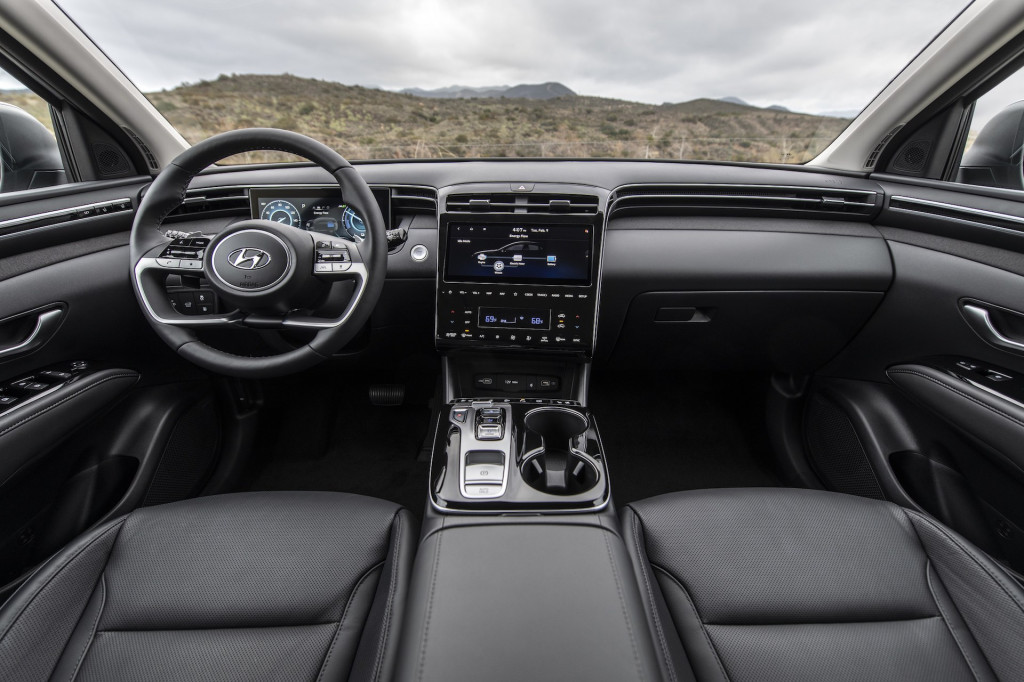
2023 Hyundai Tucson Plug-In Hybrid
Hyundai Tucson vs. Kona size, seating capacity, and cargo space
-
The Kona’s grown up beyond size small; the Tucson’s at least a medium
-
The Tucson’s roomier interior has a plain cockpit
-
The Tucson’s second-row and cargo space rule
Is the Tucson or the Kona bigger?
The Tucson, by a good margin. The Kona’s a small SUV, one with a comfortable interior for four adults—but there’s no denying its smaller footprint. The Kona has supportive front and back seats that get more bolstering in the N-Line and Limited editions, too. It has 38.2 inches of rear-seat legroom but a slim body, so it’s best suited for two medium-sized passengers in back. The Kona has as much as 63.7 cubic feet of cargo space behind the front seats, when the seatbacks are folded away; it’s 25.5 cubic feet when the rear seatbacks are raised.
How big is the Hyundai Tucson?
It’s a compact crossover but the rear seats open up to mid-size space. The Tucson gained 3.4 inches in wheelbase when it was redesigned in 2022, and it now has 108.5 inches of wheelbase—the span that dictates interior room, by and large. It’s also 182.3 inches long overall, which means it’s grown to be the size of the Toyota RAV4 and Honda CR-V.
All that space is on display inside, where the Tucson gets supportive front seats that get synthetic leather upholstery and power adjustments at the SEL trim level. In back, the Tucson’s 41.3 inches of legroom beats some of Hyundai’s sedans and it’s broader than the Kona by far, though three people across the back bench still will be snug.
The Tucson sports 38.7 cubic feet of storage room behind the back seat, and 74.8 cubic feet when those rear seatbacks get folded down.
Advantage: The Tucson has much more space, especially in the back.
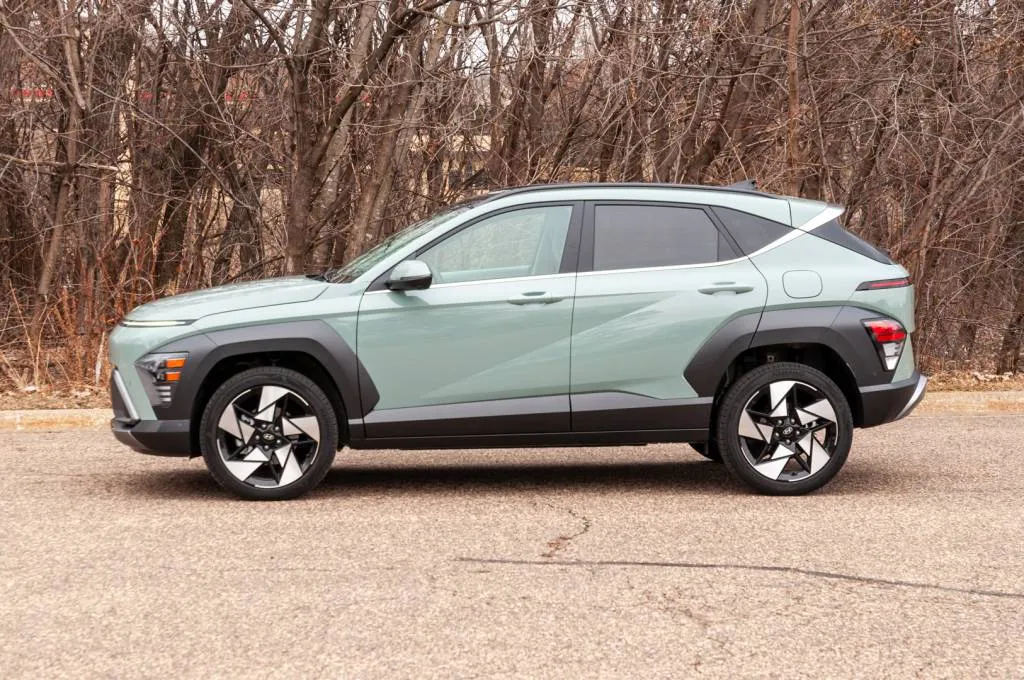
2024 Hyundai Kona

2024 Hyundai Kona
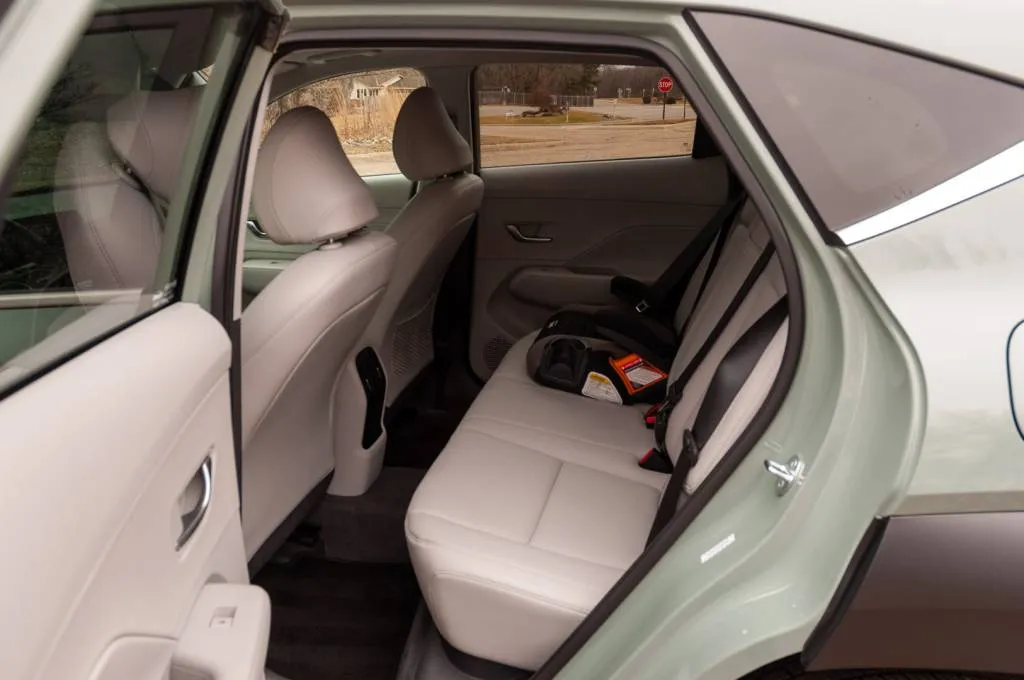
2024 Hyundai Kona
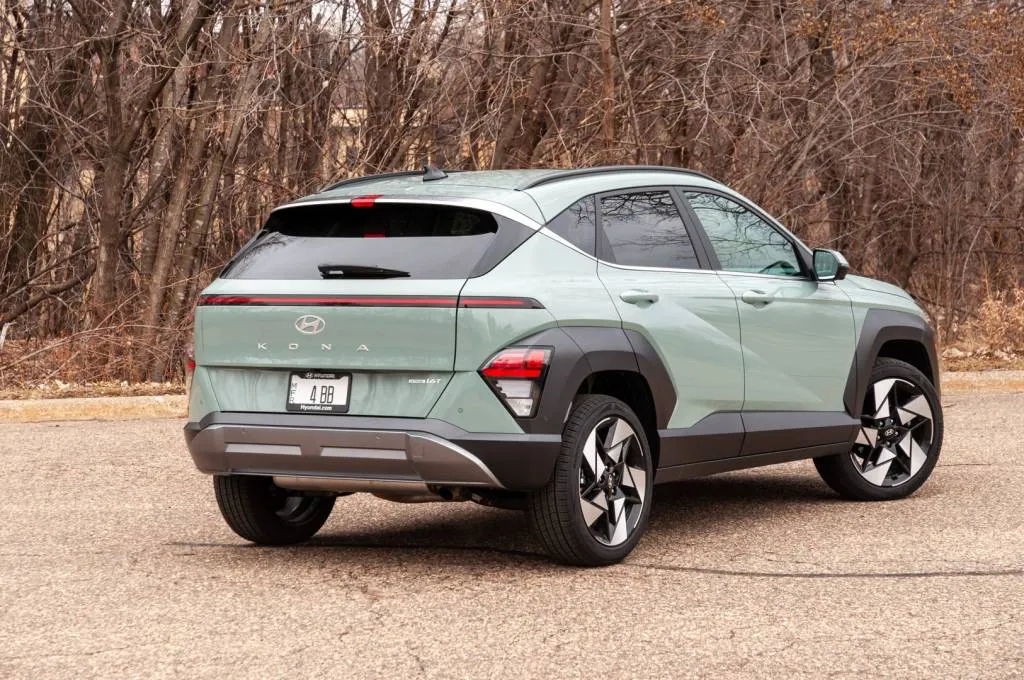
2024 Hyundai Kona
Hyundai Kona vs. Tucson safety
-
Crash-test scores are mixed with the Tucson
-
Both have automatic emergency braking
-
Both have the latest in high-tech accident avoidance features
How safe is the Hyundai Kona?
The NHTSA hasn’t updated its score since the Kona was restyled, but the IIHS gives it a Top Safety Pick+ award. All Konas get automatic emergency braking and active lane control, and more expensive models can add a surround-view camera system and adaptive cruise control.
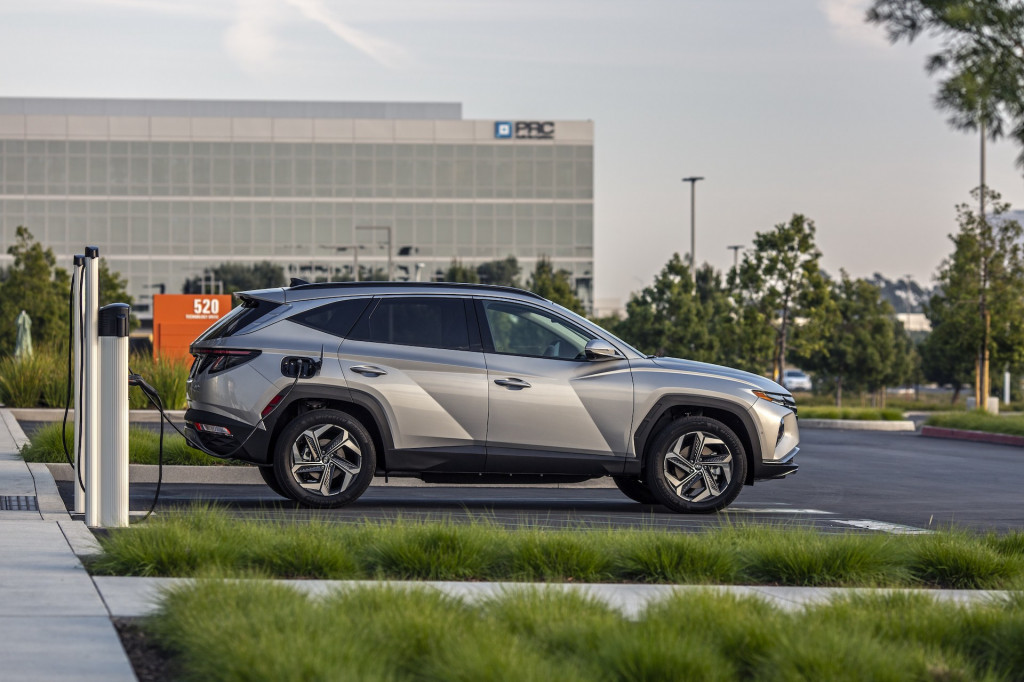
2023 Hyundai Tucson Plug-In Hybrid
How safe is the Hyundai Tucson?
It’s a Top Safety Pick+ awardee as far as the IIHS is concerned, but the NHTSA scored it at four stars overall in some versions. Still, the Tucson comes with standard automatic emergency braking, active lane control, and rear occupant alerts. At the SEL trim level the Tucson piles on blind-spot monitors and adaptive cruise control, while Limited Tucsons have blind-spot cameras, rear automatic emergency braking, front and rear parking sensors, and a surround-view camera system.
Advantage: The Kona, despite the Tucson’s newer design.
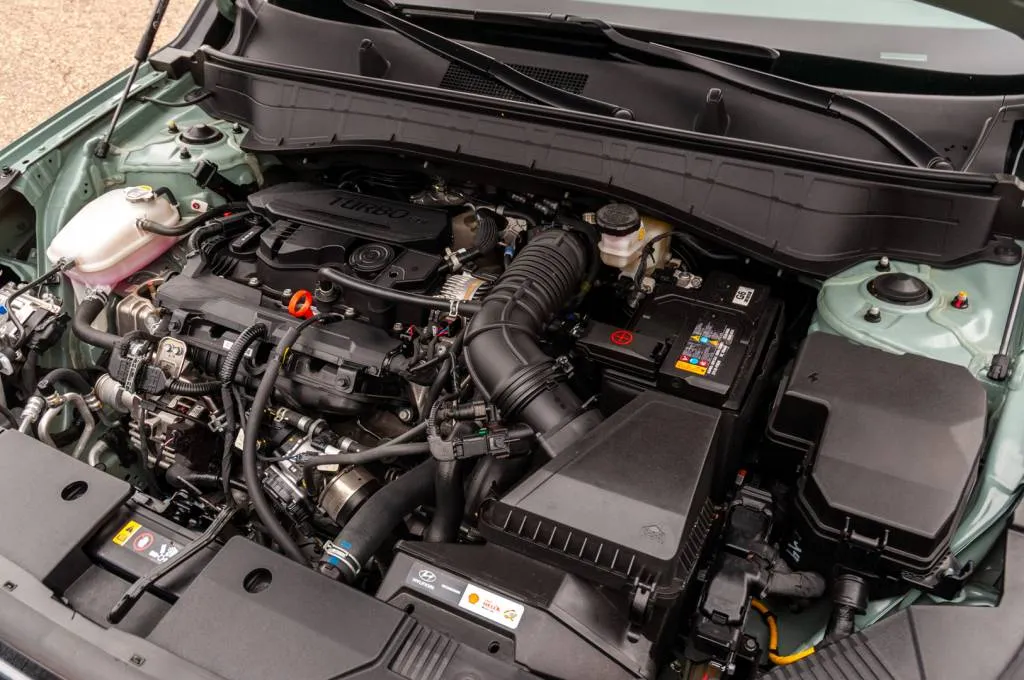
2024 Hyundai Kona
Hyundai Tucson vs. Kona fuel economy
-
The Tucson’s best economy comes in plug-in form
-
Kona gas mileage isn’t as strong as we’d hoped…
-
…But there’s a Kona Electric to consider
The Hyundai Kona doesn’t score the best in fuel economy in its class, but it does come in a Kona Electric edition that’s good for 261 miles of plug-in range. Aside from that version, the best economy of the lineup comes in base front-wheel-drive spec, with its EPA ratings of 29 mpg city, 34 highway, 31 combined. Turbo versions can be as low as 26 mpg combined.
The Tucson gets OK fuel economy when it’s not a hybrid. The EPA pegs the base versions at 26 mpg city, 33 mpg highway, 29 mpg in FWD, and 24/29/26 mpg with AWD. The hybrids score excellent ratings of 38/38/38 mpg in Blue trim and 37/36/37 mpg in SEL Convenience and Limited spec. With the plug-in hybrid powertrain, the Tucson provides 33 miles of electric driving and 35 mpg combined after it uses up that battery.
Advantage: The Kona Electric for purists, the Tucson Hybrid for the rest of us.
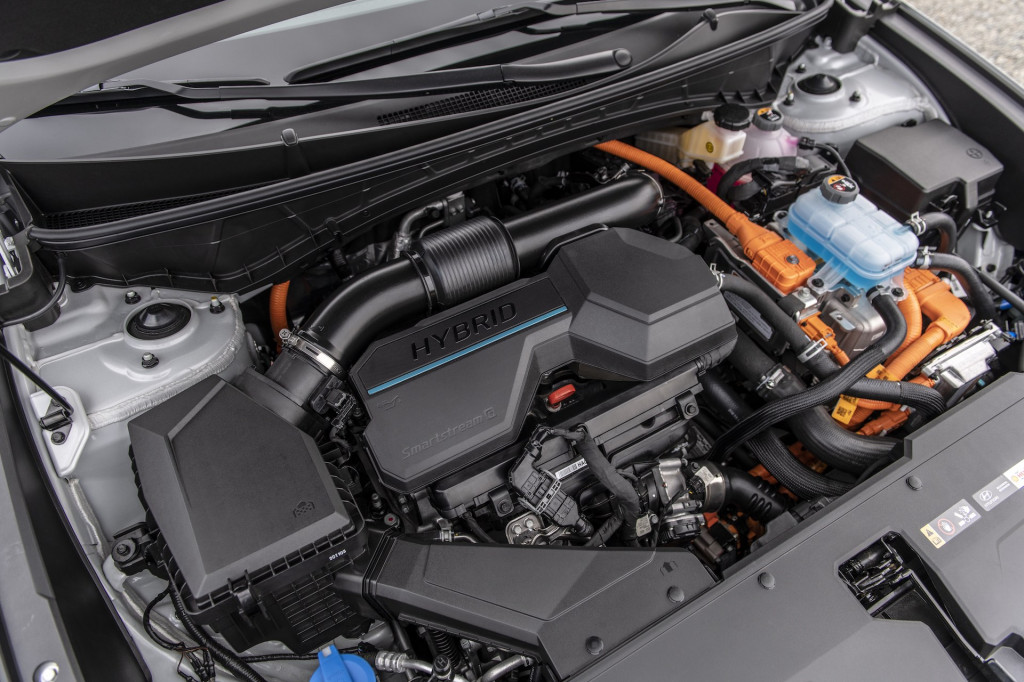
2023 Hyundai Tucson Plug-In Hybrid
Hyundai Kona vs. Tucson performance
Performance takes more of a back seat this year, now that the Kona N has been excused from duty. The rest of the lineup starts with just adequate power and tops out with a turbo model that’s more than enough for most drivers.
The Kona SE and SEL have 147 hp that comes from a 2.0-liter inline-4 linked to a CVT. It’s light on thrills, but the cure is the 190-hp turbo-4 in N-Line and Limited versions. They’re better at acceleration, and have an improved 8-speed automatic versus last year’s fussy 7-speed dual-clutch automatic. In either, the Kona’s composure has seen the biggest gains, while the gradual acceleration and unremarkable but fine handling set it on the right footing in the economy-SUV niche.
As for the Tucson, its base 187-hp 2.5-liter inline-4 comes with an 8-speed automatic transmission and either front- or all-wheel drive. It’s slow to engage and doesn’t have much grunt for highway passing. The 226-hp Hybrid version sports a 1.6-liter turbo-4 matched with a battery pack and a motor that’s much more capable of launching and needling through low-speed traffic, thanks to more torque and a smooth 6-speed automatic. Plug-in Tucsons get a bigger battery pack and handle differently as a result: all versions ride fairly smoothly and have light steering without much feeling, but the Plug-In’s considerable battery weight helps to smooth out some of the low-speed lumps in the Tucson’s ride quality. Put any of them in Sport powertrain mode and the driving mood brightens considerably.
How much ground clearance do the Hyundai Tucson and Kona have?
The Kona’s ground clearance measures 6.7 inches, while the Tucson’s settles in at 8.3 inches.
Advantage: The Kona peddles ordinary commuter performance; the Tucson Hybrid’s set for interstate cruising.
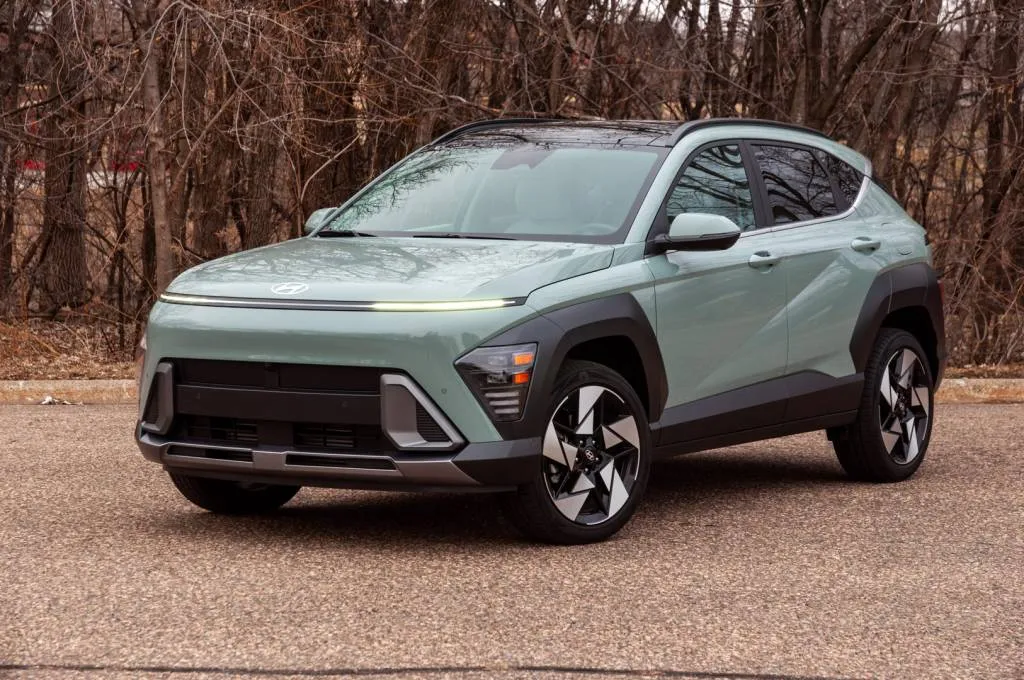
2024 Hyundai Kona

2024 Hyundai Kona
Hyundai Tucson vs. Kona exterior and interior styling
-
The Tucson has an edgy body, but a bland interior
-
The Kona’s calmed down considerably in this generation
-
Both crossovers could stand some refinement
Hyundai gets kudos for pushing the styling envelope with both its crossovers, but sometimes a manila folder would do.
The Kona has been redesigned in 2024, and there’s much to recommend in its calmer demeanor. The chaotic look of the prior version has been toned down, though its prominent light bars and wheel arches grant it a presence that’s both welcome and attractive. The interior’s upgrades include wide-screen digital displays and a generally higher grade of trim, though the overall effect looks a bit stark no matter which trim or version has been configured.
The Tucson’s edgy shape fares much better. It’s canted forward, with deep origami folds into its sides, and diamond-shaped details liven up its corners along with its faired-in LED running lights. Inside it’s a letdown: a big infotainment screen sits in a gloss-black obelisk between the front seats, where it’s ready to grab all the fingerprints it can. With its very subdued strips of metallic trim and air vents, the Tucson cabin looks like it lost all the attention to its body.
Advantage: The Tucson’s shapes work more in concert with each other. We think.
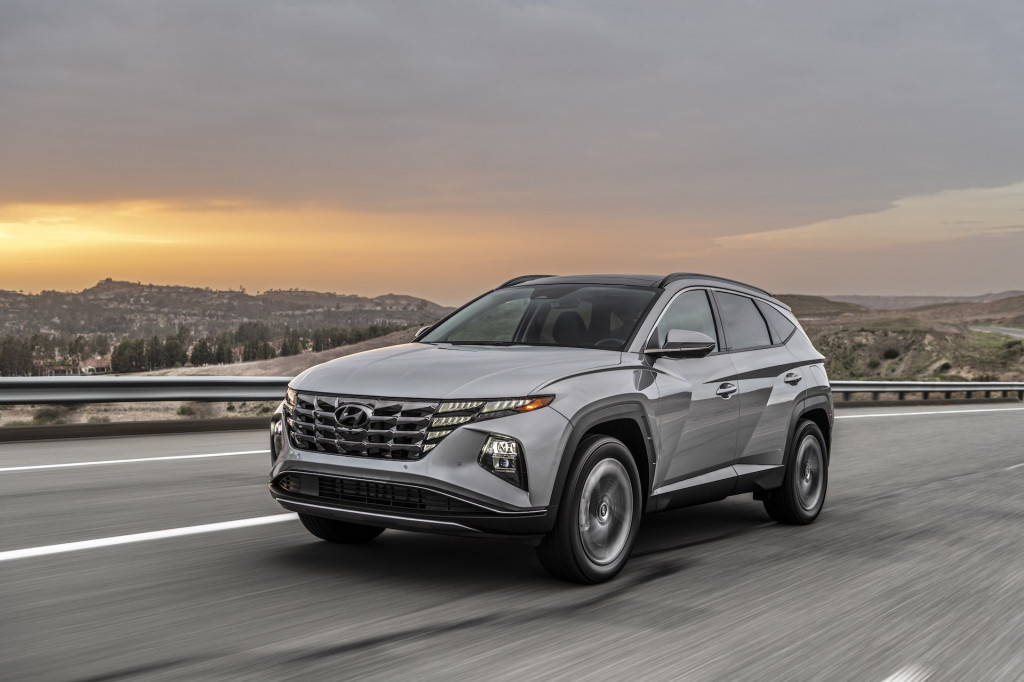
2023 Hyundai Tucson Plug-In Hybrid
Which car is better: Hyundai Kona or Tucson?
Overall, the 2024 Kona earns a TCC Rating of 6.0 out of 10, though we’d give more points to versions with the turbo engine, if we split them out. Those cars can be highly effective commuters—before we even consider the electric Kona, separately—but day in and day out, we’d trade the Kona’s somewhat lower price for the spacious, sublime Tucson Hybrid and its TCC rating of 6.7 out of 10.

